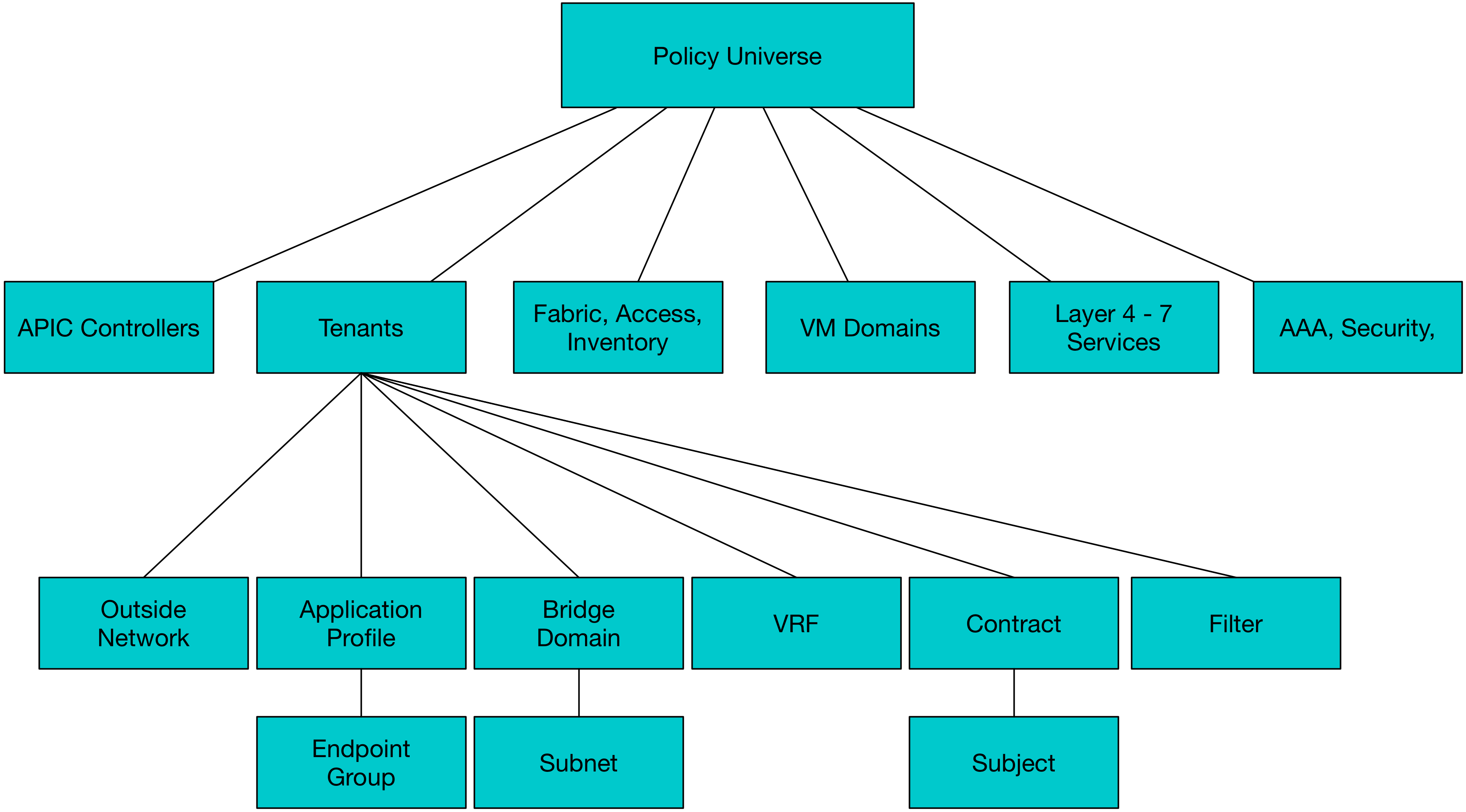Tenants can be anything we want them to be (within reason): they can be a customer, a business unit within an enterprise, or a grouping of policies. The term 'tenant' is flexible, but each tenant is (by default) an isolated unit within the fabric. It is a logical container, one that can remain self-contained or, through contracts, share resources with other tenants.
The MIT for the tenant is as follows:

As you can see from the diagram, tenants contain some different components, including application profiles, bridge domains, VRFs (also referred to as contexts), and contracts. Some of these components, such as bridge domains, have their own components, such as subnets.
We have a couple of tenants preconfigured. These are the “common” tenant (common), which holds policies for shared services, such as firewalls and DNS settings; the “infrastructure”...


